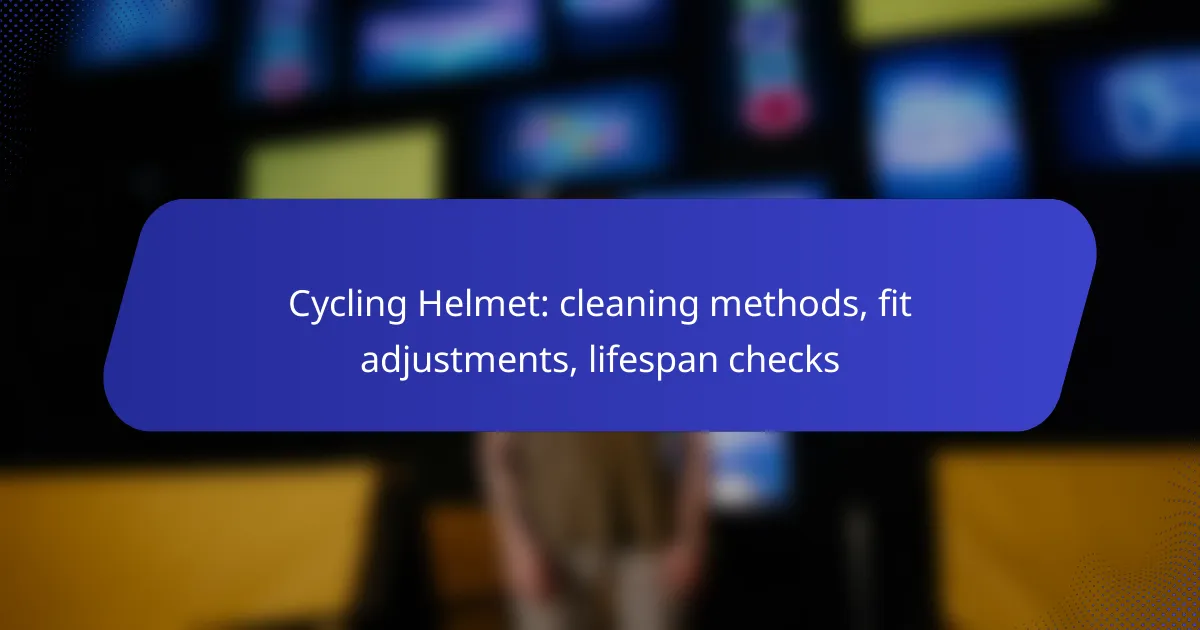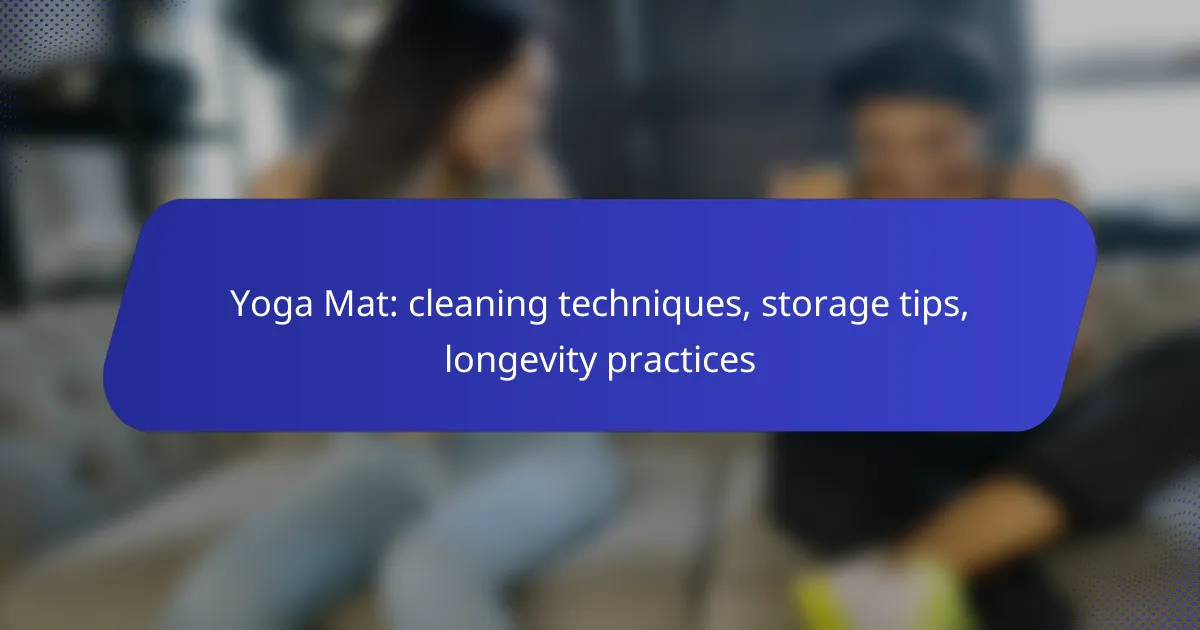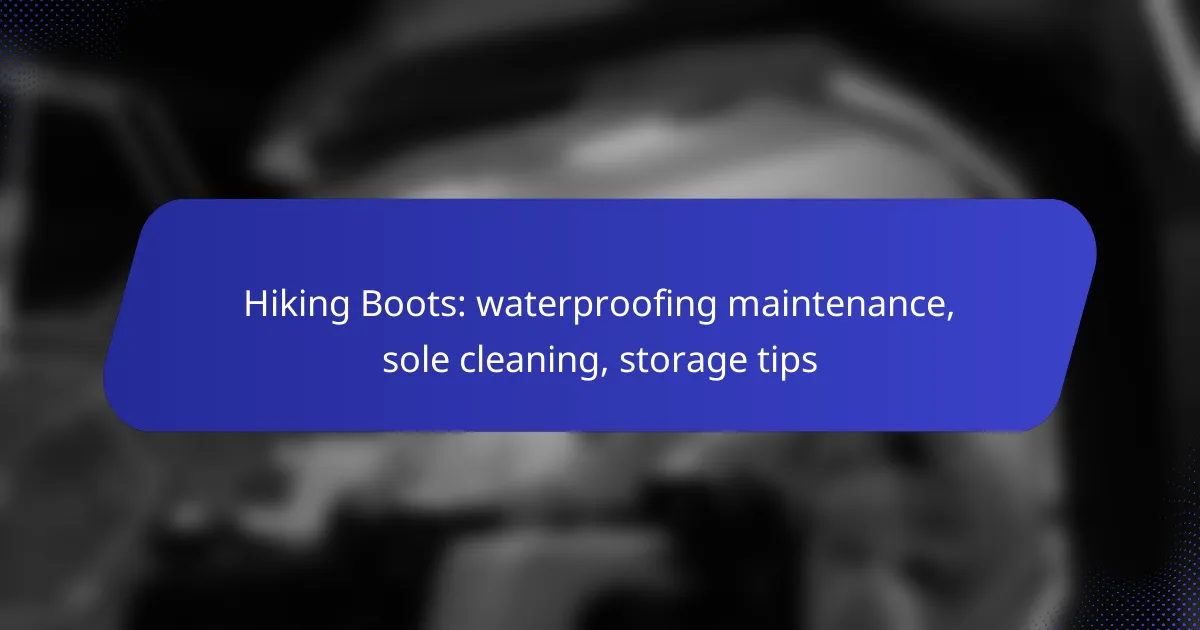Maintaining your cycling helmet is essential for both safety and comfort, and it involves effective cleaning, proper fit adjustments, and regular lifespan checks. Cleaning your helmet helps preserve its functionality, while fit adjustments ensure it stays securely in place during rides. Additionally, being aware of your helmet’s lifespan and inspecting it for damage can significantly enhance your cycling experience.

How to clean a cycling helmet effectively?
Cleaning a cycling helmet effectively involves using gentle methods to maintain its integrity while removing dirt and sweat. Regular cleaning not only keeps your helmet looking good but also helps ensure it functions properly over time.
Use mild soap and water
Start by mixing a small amount of mild soap with warm water. Avoid harsh chemicals or abrasive cleaners, as these can damage the helmet’s materials. Dip a soft cloth into the soapy water and gently wipe down the exterior and interior surfaces of the helmet.
Pay special attention to areas that accumulate sweat and grime, such as the padding and straps. Rinse the helmet thoroughly with clean water to remove any soap residue, which can cause irritation during use.
Utilize a soft brush for stubborn dirt
If dirt remains after the initial cleaning, a soft brush can help remove it without scratching the helmet. Use a toothbrush or a similar soft-bristled brush to gently scrub areas with stubborn stains or debris.
Be careful not to apply too much pressure, as this could damage the helmet’s surface. After brushing, wipe the area with a damp cloth to remove loosened dirt and debris.
Dry with a microfiber cloth
Once the helmet is clean, it’s important to dry it properly to prevent moisture buildup. Use a microfiber cloth to gently blot the helmet, absorbing any remaining water without scratching the surface.
Avoid using heat sources like hair dryers, as excessive heat can warp the helmet. Instead, let it air dry in a cool, shaded area to maintain its shape and integrity.

What are the best fit adjustment methods for cycling helmets?
The best fit adjustment methods for cycling helmets include adjusting the retention system and using padding for customized comfort. These adjustments ensure a secure fit, enhancing safety and comfort during rides.
Adjust the retention system for snug fit
The retention system is crucial for achieving a snug fit. This system typically includes a dial or strap that can be tightened or loosened to secure the helmet on your head. A properly adjusted retention system should feel firm but not overly tight, allowing for some movement without compromising safety.
To adjust, place the helmet on your head and turn the dial or pull the straps until it feels secure. You should be able to fit one finger between the helmet and your forehead. Regularly check the fit, especially if you wear different hairstyles or headgear.
Use padding for customized comfort
Padded inserts can significantly enhance the comfort of your cycling helmet. Most helmets come with removable padding that can be adjusted or replaced to better fit the shape of your head. This customization helps in absorbing sweat and reducing pressure points during long rides.
Consider using thicker or softer padding if you experience discomfort. Ensure that the padding is clean and in good condition, as worn-out padding can diminish the helmet’s effectiveness. If you need to replace padding, look for options that are compatible with your helmet model for the best fit.

How to check the lifespan of a cycling helmet?
To check the lifespan of a cycling helmet, inspect it for visible damage and verify its manufacturing date. Most helmets have a lifespan of around three to five years, depending on usage and care.
Inspect for visible damage or cracks
Regularly examine your helmet for any signs of damage, such as cracks, dents, or significant scratches. If you notice any of these issues, it’s a strong indication that the helmet may no longer provide adequate protection.
Pay special attention to the foam lining and the outer shell. If the foam is compressed or the shell is cracked, it’s time to replace the helmet, regardless of its age.
Check the manufacturing date for age
Locate the manufacturing date, usually printed on a sticker inside the helmet. This date is crucial for determining the helmet’s age and whether it has reached the end of its recommended lifespan.
Most cycling helmets are designed to last between three to five years. If your helmet is approaching or has surpassed this timeframe, consider replacing it, even if it appears undamaged.

What are the common cleaning mistakes to avoid?
Common cleaning mistakes when maintaining a cycling helmet include using harsh chemicals and submerging the helmet in water. These actions can damage the helmet’s materials and compromise its safety features.
Avoid harsh chemicals
Using harsh chemicals, such as bleach or ammonia-based cleaners, can degrade the helmet’s outer shell and padding. Instead, opt for mild soap and water to clean the surface effectively without causing damage.
Always check the manufacturer’s guidelines for recommended cleaning products. Some brands may specify certain cleaning agents that are safe to use, ensuring the longevity of your helmet.
Do not submerge the helmet in water
Submerging a helmet in water can lead to moisture getting trapped inside, which may promote mold growth and weaken the internal structure. Instead, use a damp cloth to wipe down the exterior and interior padding.
If your helmet requires more thorough cleaning, focus on spot cleaning with a soft sponge and mild soap. This method helps maintain the integrity of the helmet while ensuring it remains hygienic for use.

What tools are recommended for helmet maintenance?
For effective helmet maintenance, a few essential tools are recommended, including soft brushes for cleaning and specific tools for fit adjustments. These tools help ensure that your helmet remains clean, comfortable, and safe for use.
Soft brushes for cleaning
Soft brushes are ideal for cleaning the exterior and interior of your cycling helmet without damaging its materials. Look for brushes with gentle bristles that can effectively remove dirt and debris without scratching the surface.
When cleaning, use a mixture of mild soap and water, applying it with the soft brush. Rinse thoroughly to avoid any residue that could degrade the helmet’s materials over time.
Helmet fit adjustment tools
Fit adjustment tools, such as a screwdriver or a dedicated helmet fitting tool, are crucial for ensuring your helmet fits snugly. A proper fit enhances safety and comfort, reducing the risk of the helmet shifting during rides.
Most helmets come with adjustable straps and padding. Regularly check these components and make adjustments as needed to maintain a secure fit. If the helmet feels loose or tight, use the adjustment tools to modify the straps accordingly.

How often should you clean your cycling helmet?
You should clean your cycling helmet regularly to maintain hygiene and ensure optimal performance. Cleaning frequency depends on usage conditions, such as weather and riding frequency.
After every ride in wet conditions
Cleaning your helmet after rides in wet conditions is crucial to prevent mold and mildew growth. Moisture can lead to unpleasant odors and degrade the helmet’s materials over time.
To clean, simply rinse the exterior with water and use a mild soap solution for the interior padding. Make sure to dry it thoroughly before storing to avoid moisture retention.
At least once a month for regular use
For cyclists who ride regularly, a monthly cleaning is recommended to keep the helmet fresh and functional. This routine helps remove sweat, dirt, and oils that can accumulate and affect the helmet’s integrity.
During this monthly clean, inspect the helmet for any signs of wear or damage. If you notice any cracks or significant wear, consider replacing the helmet to ensure safety during rides.

What are the signs of a poorly fitting helmet?
A poorly fitting helmet can be identified by signs such as excessive movement during rides and discomfort from pressure points. Ensuring a proper fit is crucial for safety and comfort while cycling.
Helmet shifts during rides
If your helmet shifts or moves around while cycling, it likely does not fit correctly. A well-fitted helmet should remain stable, even during sudden movements or bumps. If you find yourself adjusting it frequently, consider trying a different size or model.
To check for proper fit, perform a simple test: shake your head gently side to side and up and down. If the helmet shifts significantly, it may be too loose, and you should tighten the straps or look for a smaller size.
Pressure points causing discomfort
Discomfort from pressure points is another clear indicator of a poor helmet fit. If certain areas of your head feel sore or pinched after wearing the helmet for a short time, it may be too tight or not shaped correctly for your head. A helmet should distribute pressure evenly across your head.
To alleviate pressure points, adjust the fit system or padding. Many helmets come with removable pads that can be swapped for thicker or thinner options. If discomfort persists, consider consulting a professional at a local bike shop for fitting assistance.



